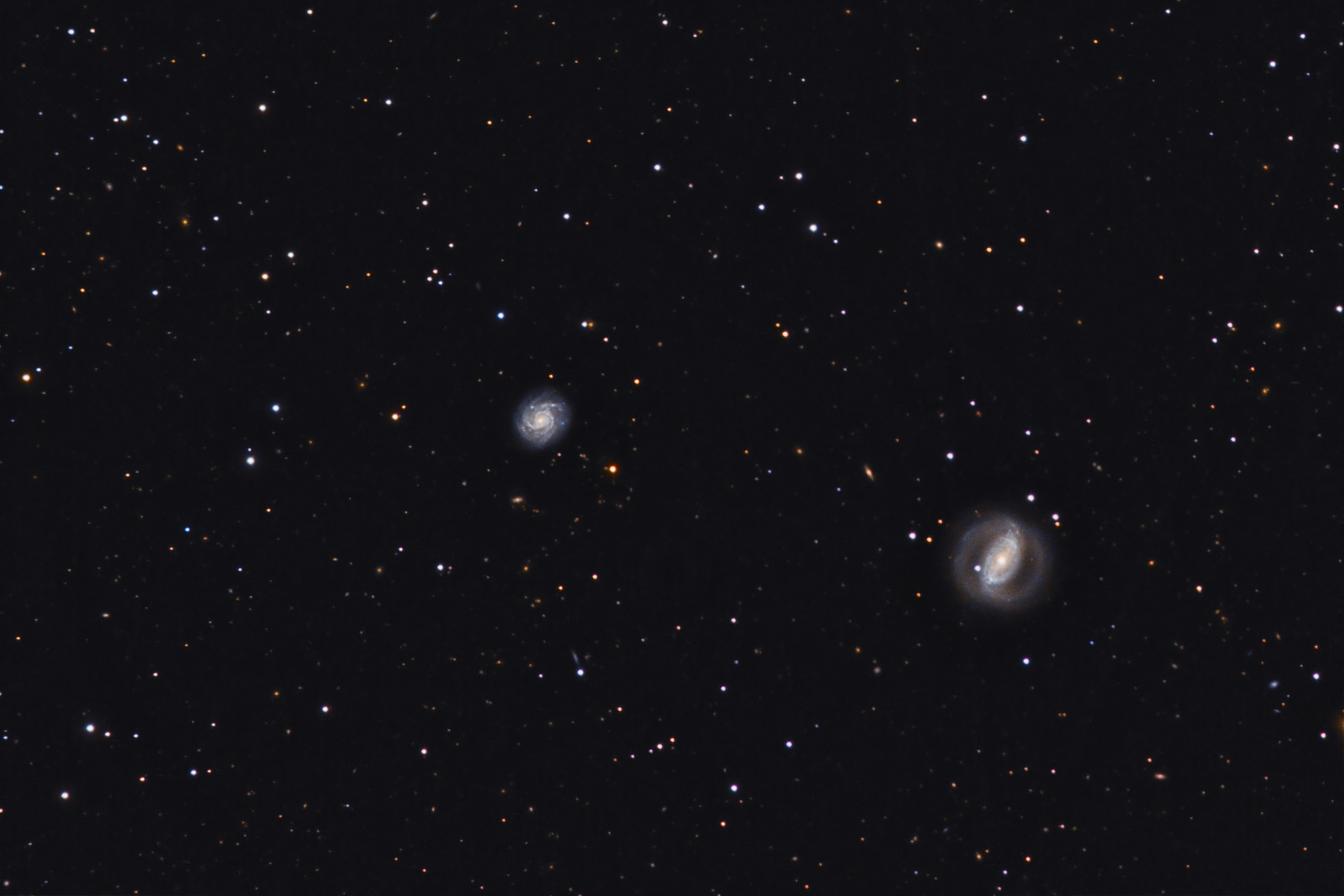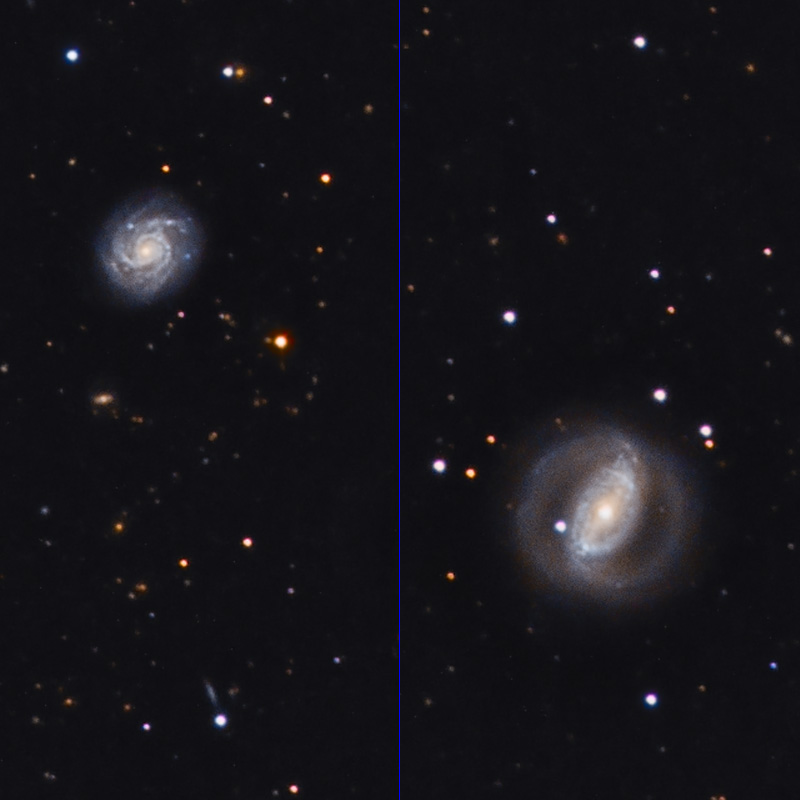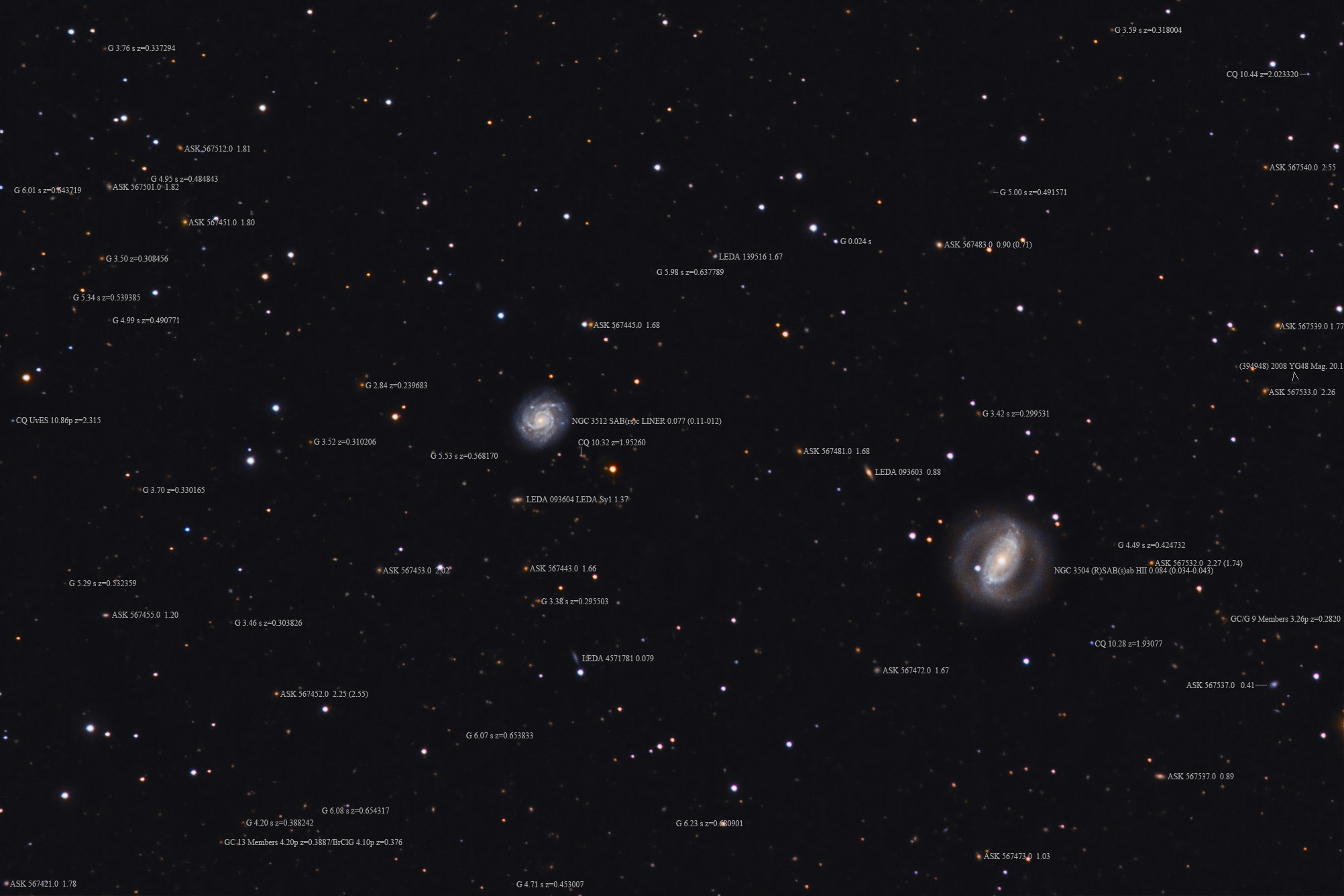| Description | Images |
Object name: NGC3504Designation(s): NGC3504, NGC3512, NGC 3504 and NGC 3512 are two interesting near face-on spiral galaxies in eastern Leo Minor near the border of Leo and Ursa Major. Both are considered by some to have starburst cores but NED makes no mention of this in its classifications. These are two rather photogenic galaxies mostly ignored by the amateur imaging community. I didn't find even one image of these at Astrobin or the Cloudy Nights imaging forums. Both were discovered by William Herschel on April 11, 1785. NGC 3504 is in the original H400 observing program. I saw NGC 3504 on April 15, 1985 on a night hurt by high humidity. Using my 10" f/5 at up to 150 power my entry reads "Large, circular galaxy with a brighter nucleus. Nearby 14th magnitude star on top of the galaxy near its edge. Little detail was seen." Sound like I was seeing the outer ring? I'd think that too faint. So why the circular comment. At least I got the star right as I measure it on my image at 14th magnitude. But it's at the edge of the elongated bar, not the ring. Another case of needing Mr. Peabody's Wayback Machine. I made no mention of NGC 3512 for some reason. Maybe the night was too poor to see it. Related Designation(s):1RXS J110311.1+275815, 2MASS J11031122+2758212, 2MASS J11040295+2802123, 2MASX J11031119+2758207, 2MASX J11040298+2802125, 2MASXi J1103111+275820, 2MASXi J1104027+280213, 7C 1100+2814, 87GB 110028.4+281441, 87GB[BWE91] 1100+2814, ABELL 1185:[BVC99] 007, ABELL 1185:[BVC99] 008, AKARI J1103111+275818, AKARI J1104027+280218, B2 1100+28, CGCG 1100.4+2815, CGCG 1101.3+2818, CGCG 155-049, CGCG 155-051, GALEXASC J110311.35+275819.8 , GB6 J1103+2758, IRAS 11004+2814, IRAS 11013+2818, IRAS F11004+2814, IRAS F11013+2818, KUG 1100+282, LDCE 0763 NED006, LDCE 0763 NED007, LGG 227:[G93] 005, LGG 227:[G93] 006, LQAC 165+027 011, MAPS-NGP O_318_0696772, MCG +05-26-039, MCG +05-26-041, MG2 J110310+2759, MJV 01925, NGC 3504, NGC 3512, NGC3504, NGC3512, NSA 138642, NSA 159215, NVSS J110311+275821, NVSS J110402+280217, PGC 033371, PGC 033432, SDSS J110311.24+275820.2, SDSS J110402.94+280212.4, SDSS J110402.94+280212.5, TXS 1100+282, UGC 06118, UGC 06128, UZC J110311.2+275820, UZC J110402.9+280212, VLSS J1103.1+2758, [BEC2010] HRS 036, [BEC2010] HRS 037, [dML87] 639, [KK90] 020, [KK90] 022, [KSD2015] 16, [M98j] 110 NED01, [M98j] 110 NED02, [RHM2006] SFGs 133, [VCV2001] J110311.2+275822, [VCV2006] J110311.2+275822, [WB92] 1100+2814, |


